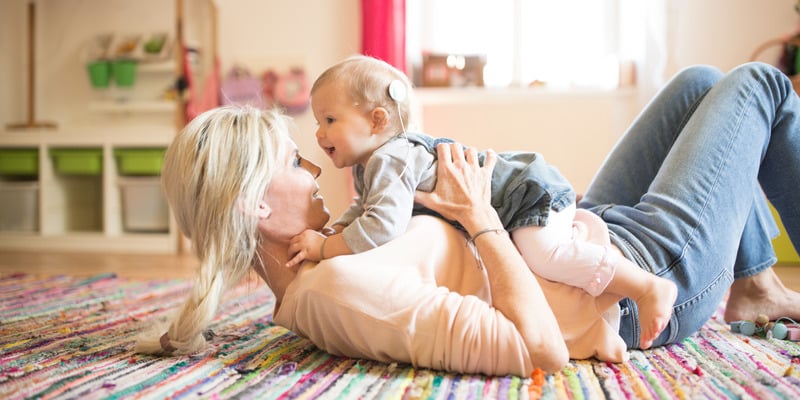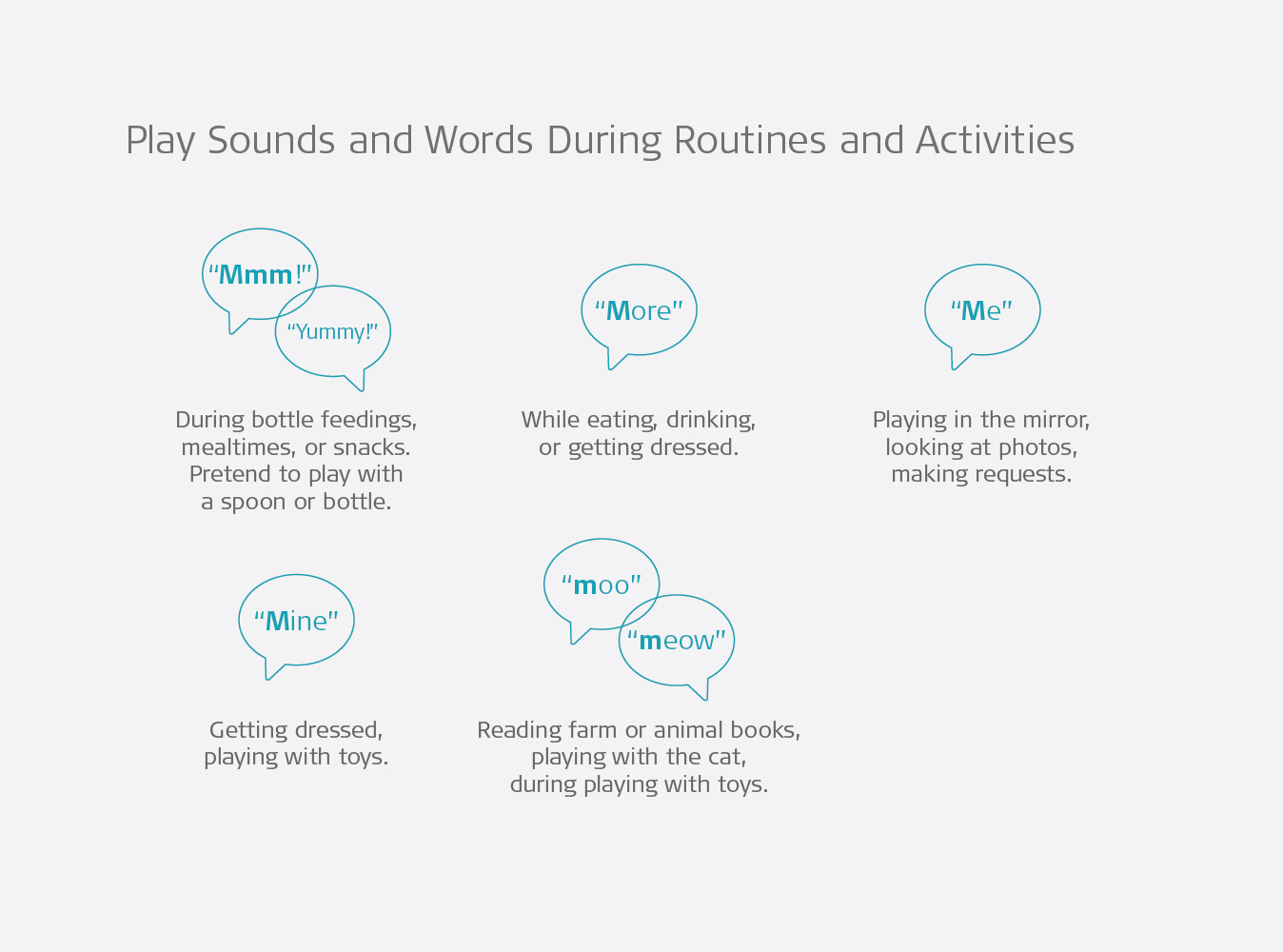MED-EL
Published Aug 03, 2022
Easy Strategies to Support Speech for Babies and Toddlers With Cochlear Implants

After cochlear implant activation, hearing your child say their first word is one of the early but powerful milestones along their hearing journey. But getting to that first word takes time, depending on many factors like how much access to sound your child had before activation.
Here are some strategies that will help you lay a firm foundation to build your child’s speech through listening after their device is switched on.
Reinforce Your Child’s Use of Their Voice
Before making the leap to true words, teach your child that their voice has power and influences the way others behave. Turn to the sound of their voice, point to your ear, and show them you’re listening—even when they don’t mean to catch your attention. Imitate the silly sounds they make to teach them that their voice is meaningful to you. See how many turns you can take with them using your voices back and forth, together.
Use Play Sounds Often
Play sounds are speech sounds or simple words that have a specific meaning. For example, “mmm” for yummy, “moo” for a cow, or “shh” for quiet. They often include speech sounds that are early developing in children.
Emphasize these sounds when playing with animals or vehicles or during your daily routine; say “ahhhh” for the airplane as you fly it or “meow” for the cat while petting it. When your child attempts to make a sound, repeat the action so that they begin to connect the object with the sound.
When children try to use these sounds, they often imitate the way a sound was said (e.g., soft or loud, short or long). Even though the specific consonants or vowels may not be clear or correct; this is typical for children following implantation and a good start.
Play With One Sound for Brief Periods
Some speech sounds develop earlier than others. Across languages, studies show that vowels emerge earlier in speech than consonants. Sounds that are made with both lips (e.g., “buh” or “puh”) or through the nose (e.g., “mm”’ or “nnn”) tend to develop earlier than other sounds. Ask a speech-language professional about which sounds are produced earliest in your language.
Take time to allow your child to listen to these sounds in a fun and playful way for a few minutes at a time. You can also pair them with songs or books that feature this sound to make the play last longer. This is called auditory bombardment and can help your child recognize the sound more easily when it’s used in natural speech.
Here’s an example of an auditory bombardment activity for the sound “m.” To practice, select at least three play sounds, songs, or rhymes from the list below for your child to listen to each day for a few minutes at a time.
Songs and Rhymes
- The Muffin Man
- Old MacDonald Had a Farm
- Mr. Sun
- Mary Had a Little Lamb
MED-EL
Was this article helpful?
Thanks for your feedback.
Sign up for newsletter below for more.
Thanks for your feedback.
Please leave your message below.
Thanks for your message. We will reply as soon as possible.
Send us a message
Field is required
John Doe
Field is required
name@mail.com
Field is required
What do you think?
The content on this website is for general informational purposes only and should not be taken as medical advice. Please contact your doctor or hearing specialist to learn what type of hearing solution is suitable for your specific needs. Not all products, features, or indications shown are approved in all countries.
MED-EL



